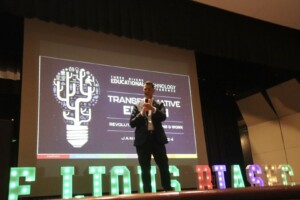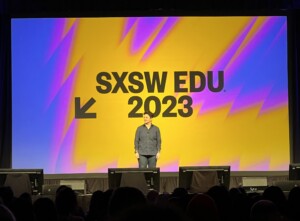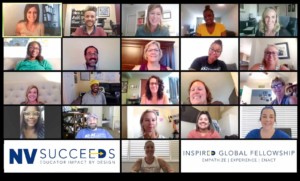How Leaders Inspire Groups to Innovate
By Alan K. Rudi
 Success in today’s global marketplace demands innovation. The world has watched the likes of Jack Welch (General Electric), Steve Jobs (Apple), Bill Gates (Microsoft) and Bill George (Medtronic) as they inspired their businesses to innovate. Each possesses varying degrees of the key characteristics and leadership styles known to result in innovation. The same styles translate to innovation in education. In order to drive a team to innovate, a leader must show strength in one or more of the following leadership styles:
Success in today’s global marketplace demands innovation. The world has watched the likes of Jack Welch (General Electric), Steve Jobs (Apple), Bill Gates (Microsoft) and Bill George (Medtronic) as they inspired their businesses to innovate. Each possesses varying degrees of the key characteristics and leadership styles known to result in innovation. The same styles translate to innovation in education. In order to drive a team to innovate, a leader must show strength in one or more of the following leadership styles:
- Love, Honesty
- Teacher, Mentor
- Servant
- Example
- Self-Development
- Commitment, and
- Purpose.
It’s worth noting that even the most successful leaders don’t embody all of these styles or characteristics. Rather, they exhibit strengths in several areas that allow them to create a climate where innovation thrives. Steve Jobs, for example, shined in the areas of commitment, purpose and passion. That, in turn, created an atmosphere where his employees’ creative innovations were nurtured and valued.
Peter Drucker, a well-known educator and business consultant, describes seven sources of systemic innovation for developing solutions to major problems, all of which involve analytical thinking:
- The Unexpected: When something performs much better or worse than expected, it’s important to ask why. What benefits could there be in further exploiting an unexpected success? What additional opportunities are now available? Discuss both successes and failures in order to dig for insight.
- Incongruity: An incongruity is the difference between what should be and what is. Always challenge assumptions and listen to feedback. Identifying misperceptions provides a jumping-off point for new insights and innovation.
- Process Need: This is a task-focused rather than a situation-focused source of innovation. Close examination of processes frequently shines a bright light on inefficiencies and other problems that are often easily addressed with creative solutions.
- Industry and Market Structure Change: Any time an industry or sector experiences rapid growth or technology advances significantly or merges with another technology, growing pains are inevitable. Careful consideration of the changes is bound to turn up some smart solutions and improvements.
- Demographics: Changes in a population’s age distribution, educational level, income, social status and the like are important to notice in most industries. Accommodating a changing audience or market requires being attuned to their particular needs—something worth addressing with innovative ideas.
- Changes in Perception, Meaning or Mood: Each generation brings new perspectives that may make longstanding approaches obsolete. Baby Boomers experience food, age, recreation—just about everything—differently than their Depression-era parents did. Each time the torch is passed, new attitudes can topple an organization’s conventional wisdom and require a fresh vision.
- New Knowledge: In the Information Age, it’s nearly impossible to keep abreast of every important advance and discovery in any field. But constant exposure to the latest research, the newest technologies and the most creative ideas does more than inform us about the world; it serves as an important source of inspiration for our own innovations.
Strong leaders can follow the styles that come most naturally to them and draw from Peter Drucker’s seven sources of systemic innovation in building a roadmap to guide teams to become successful innovators.
Alan Rudi is the General Manager of Thesys International , an education business that supports schools with a hybrid online / classroom approach to education. As a Fairmont Education Group company, Thesys represents the culmination of thought, curricular innovation, and evolution of the classroom throughout Fairmont’s 57-year history as a leading educational provider in Southern California. At Thesys we believe in innovating with technology. We believe in kids, and in kids innovating. We believe a new educational model can inspire a new generation of learners. Follow Alan on Twitter at @ThesysIntl.






0 Comments
Leave a Comment
Your email address will not be published. All fields are required.